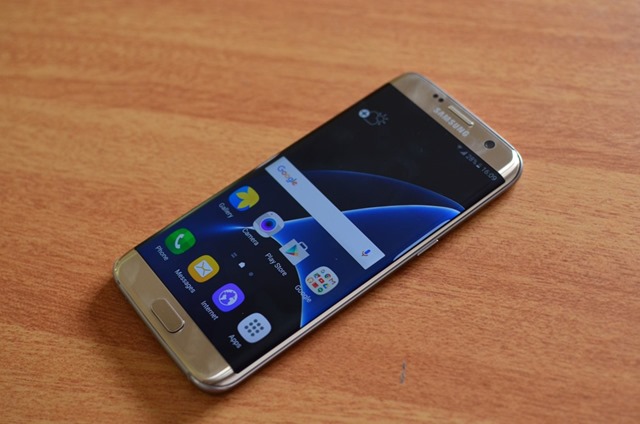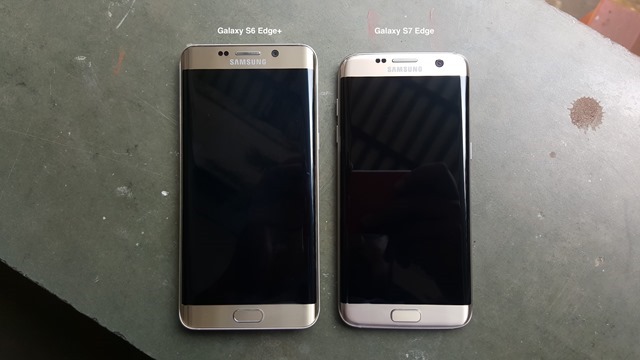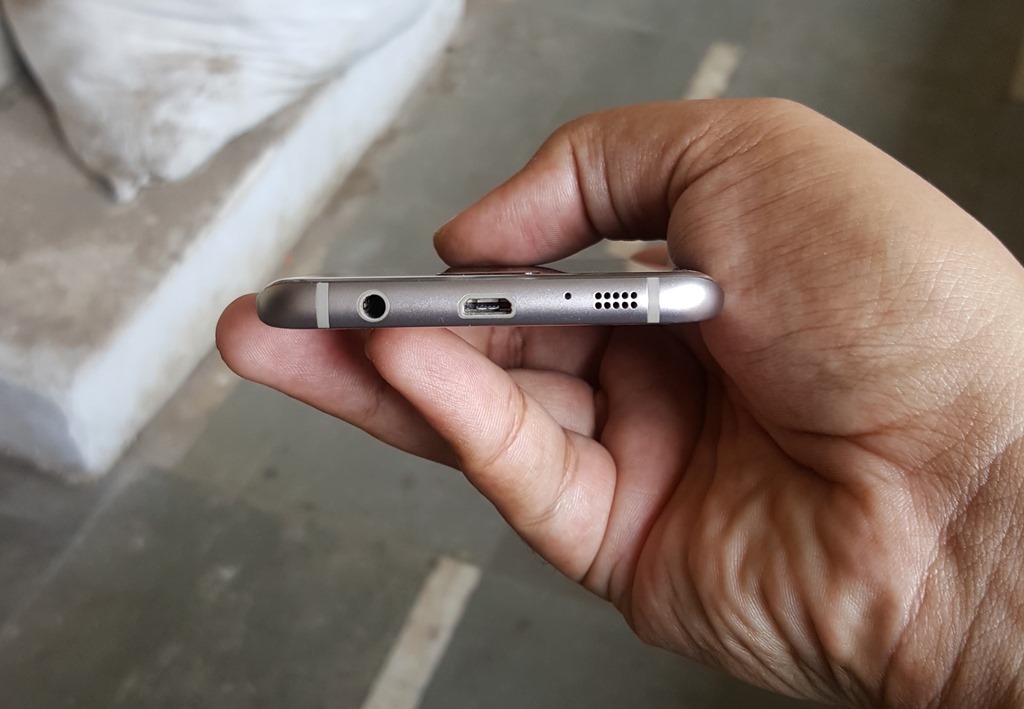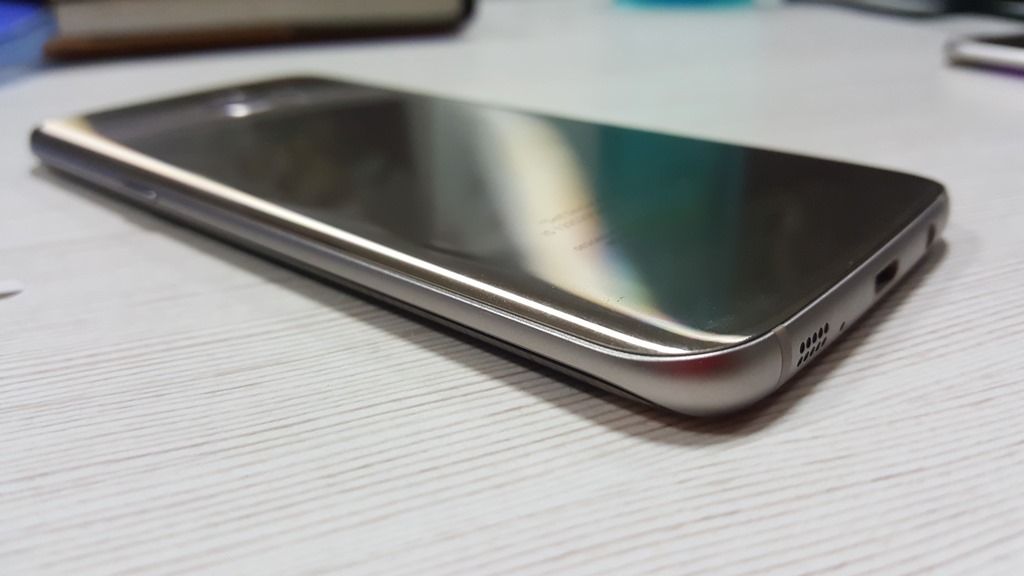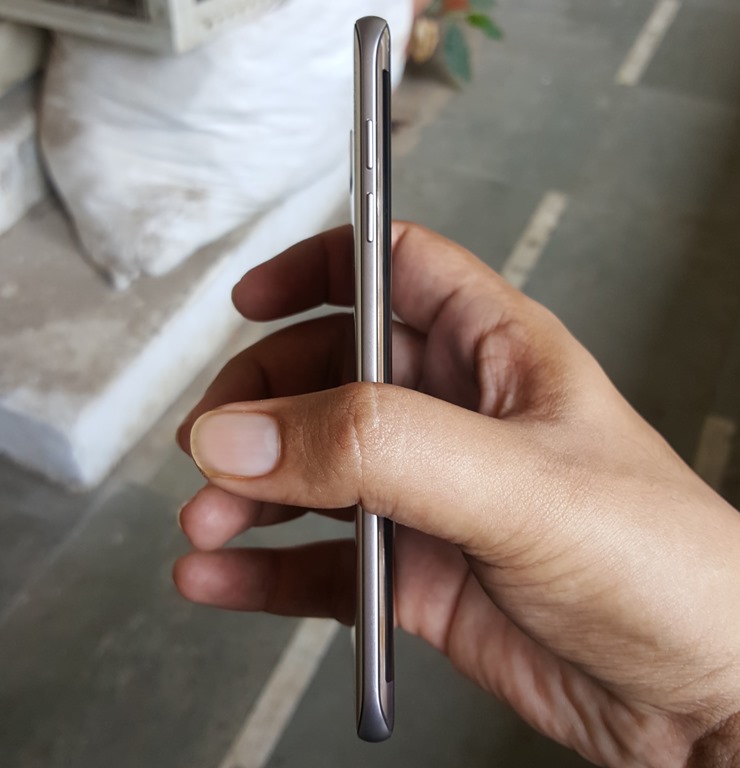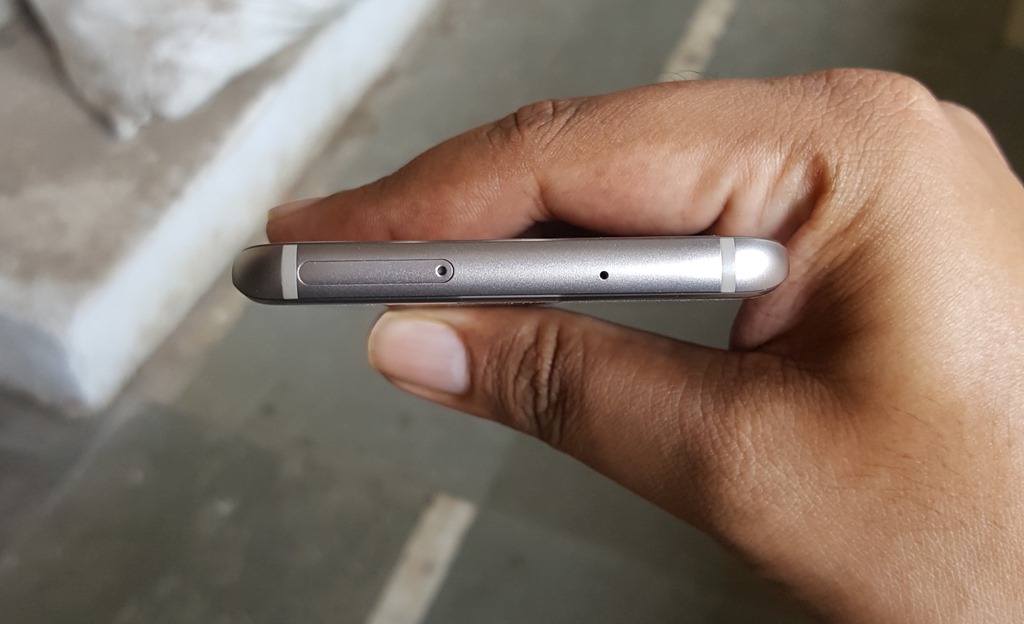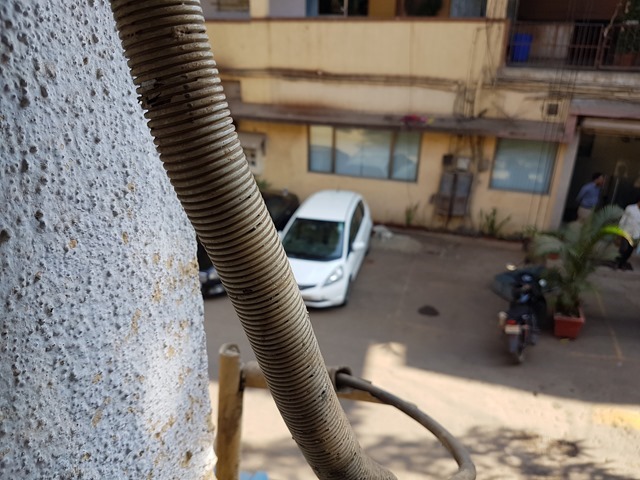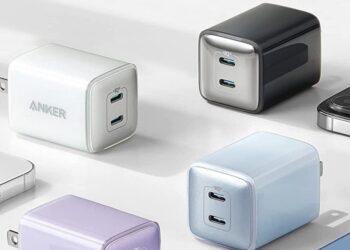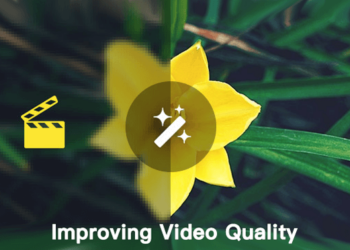Samsung really pulled their socks last year with the Galaxy S6, which greatly improved upon the much-criticised Galaxy S5 with a premium design, top-notch camera, and performance. But in an attempt to compete with the iPhone’s thinness, its battery life took a huge hit thanks to an extremely pixel-dense display & powerful hardware sucking away at a relatively small-sized battery.
But the Galaxy S6 did set a benchmark for Samsung that was hard to top this year. Fortunately, Samsung did the wise thing by not changing anything that wasn’t broken, but rather fixed the things that needed fixing. Disclosure: after using the Galaxy S6 as my primary phone for close to a year, I’m happy, jealous even, of the way Samsung has handled things. But do all the changes that I will elaborate in this comparison make the Galaxy S7 Edge, the best phone in the market right now? As always is the case, the answer is both yes and no.
Design and Hardware
First things first, last year there was the regular 5.1-inch screen Galaxy S6, its curve-screened cousin, the Galaxy S6 Edge and the bigger 5.7-inch Galaxy S6 Edge+. This year, there are just two models (so far) — the 5.1-inch Galaxy S7 and the 5.5-inch Galaxy S7 Edge, the latter of which is under review here. Other than the bigger curved screen and the bigger battery, there are no differences between the two Galaxy S7 models.
The Galaxy S7 Edge is an incremental evolution of the design that was brought forth by last year’s Galaxy flagships, carry-forward the beautiful glass and metal construction that feels just as solid and premium to hold. Basically, it looks like you paid a lot of money for this phone (which you will). The back is also curved like the Note 5, which makes picking up the Galaxy S7 Edge easier than last year’s flat-backed Galaxies. It is heavier than the S6 Edge+ only by a few grams and did not feel bulky, assuming due to the appropriate weight distribution.
But one of the best things about the design of this phone is that it does not feel unwieldy despite the 5.5-inch screen size. The curved screen could be the reason for this; since the screen gently curves at both the ends, the width of this phone is lesser than other 5.5-inch screened phones. The 2560 x 1440 pixel resolution is adequate and I can’t imagine how much better a screen on a mobile phone can be. Colors are pop thanks to the Super AMOLED display, but I can’t help but notice the display appears a little pale. In my observation, my Galaxy S6 also paled out a little after the Marshmallow update, so it appears as if Samsung has deliberately toned it down.
Along with the benefits, it also carry-forwards some of the issues with the design, namely its affinity for fingerprints and the chance that the glass may crack upon a hard fall. I got the white Galaxy S6 last year because it doesn’t show fingerprints as easily as other bright colours do. Also, my phone has fallen on a flat surface from a small height (say about ~3 feet) a couple of times, and the glass back didn’t shatter for me. So I’m fairly confident the Gorilla Glass 4 should hold on the Galaxy S7 Edge. But that psychological fear of it breaking is inescapable because it’s made of glass. That fear is inescapable also because the glass construction makes these phones slippery. If you’re wearing pants with a slant pocket opening, there’s a very high chance this phone will slip and fall out. Since I was familiar with this kind of behaviour, I am used to keeping the phone out of the pocket whenever I’m sitting down.
The camera bump at the back is now less pronounced because the S7 Edge is almost a millimeter thicker than the S6 Edge+. That added thickness is attributed to the drastic increase in battery size to 3600mAh (up from 3000mAh on the S6 Edge+). The buttons click with a reassuring feedback and the fingerprint scanner, other than being blazingly fast, is also easier to use simply because it’s taller than before and occupies more of your finger. The SIM card slot can now accommodate a second SIM in the Indian model or a microSD card over and above the 32GB of internal memory. Many Samsung enthusiasts would welcome the reintroduction of the micro SD slot, and it’s also good to see more flagship phones with Dual SIM slots; which for weird reasons, were only seen on entry and mid-range models until a few years ago. Lastly, there’s a rather scary hack that lets you use two SIMs and a microSD card at once.
Lastly, a big feature that this design manages to hide very nicely is the phone’s IP68 water and dust resistance capabilities. Without the need for any flaps, you can dunk this phone into fresh water up to 1.5 meters for 30 minutes and it should survive. Although I don’t see why one would want to do that on purpose, it’s nice to know that this expensive device is more resistant to those unexpected rain splashes or sweat. But, the insulation against water might be the reason for inferior speaker performance from the single-firing unit at the bottom, which on my S6 feels louder and clearer. Not to say the output is not satisfactory, it’s just worse when you compare.
Software and Performance
Like other Samsung smartphones, the S7 Edge comes with its own interface and functionality layer called TouchWiz on top of Android. Although TouchWiz has become less ugly than before, it still may not be the interface choice for people who prefer clean, unadulterated Android. The phone is absolutely fast; the Exynos 8890 Octa-core chip coupled with 4GB of LPDDR4 RAM and UFS 2.0 based internal storage might be credited for this. In comparison, my Galaxy S6 now appears slightly slower, something I did not notice until I used this. I suppose this is how it works, right? Like how until the iPhone 6s, the iPhone 6 also did not feel slow.
Interestingly, the phone also doesn’t heat up at all, unlike my Galaxy S6, which did sometimes. Probably that’s due to the cooling system. Overall, I’m absolutely satisfied with the performance of this phone, and looking at how my S6 has aged, I’m fairly confident this phone will not feel slow at least two to three years from now.
Now let’s talk about the Edge features of this phone. First of all, the curved screen is cool in appearance. It also makes content appear different from typical screens. It’s a little hard to describe but it sort of looks like you’re looking at content through a wine glass. But in my realistic opinion, it is more a gimmick and not practical.
First of all, many Android apps have the hamburger menu which can be quickly summoned by swiping from the edge of the screen. This gesture is simpler on a flat screen and you will almost never miss. But on the curved screen of the S7 Edge, it took me some time to train myself to carefully swipe all the way from the slanted corner. Because if I didn’t, I would end up accidentally triggering something else in the app instead. Next, you can swipe the edge on any screen to bring up the Edge-centric interface. Here, you can set shortcuts to your favourite apps, have action shortcuts like “Take Selfie” or “Compose SMS” (only for built-in apps) and can cycle through other widgets like News, Weather etc. This interface despite being universally accessible, didn’t really make me want to use it, probably because of the effort to carefully swipe the edge mentioned above. Bottom line, swiping the edges turned out to be a very hit-and-miss affair.
Although I might have come off as a Touch Wiz hater, I’ll admit there are a few things to like about this overlay. For example, the notification drawer has toggles for settings accessible the first time you swipe down, unlike Stock Android where you have swipe twice (this is fixed in Android N). In settings, you can set 9 of your most used settings up top, which is super-convenient. When you’re unable to reach somebody over a phone call, a screen with shortcuts to call the person back or SMS stays afloat for 2 seconds. This has proved to be very nifty to me. Lastly, you can also customise the two shortcuts at the bottom corners of the lock screen to your favourite apps.
There’s a ton of bloatware like S Voice, S Health, MS Office, OneDrive, S Planner, Samsung Gear that you cannot uninstall, just disable.
Cameras
One of the best things I like about my Galaxy S6 is the camera. I’ve gotten so used to the high-quality images and instant capture capabilities thanks to the double-tap-home-button gesture, that it will be the biggest thing I’ll miss if I move away from Samsung. The Galaxy S7 Edge retains this experience by opening the camera just as fast, allowing to capture that moment before it fades away. The camera quality is definitely one of the best I’ve seen on any smartphone; other than expectedly great shots in daylight, the bigger F1.7 lens manages to capture better low-light photos than my S6, which was already pretty good.
The autofocus is as fast as it can get, and is almost always on point, so you’ll get a crisp image. There are a ton of modes including slo-mo videos which delivers slightly grainy video but with a really smooth slo-mo effect. There’s Pro mode for tweaking focus, ISO, aperture, white balance manually. I like how when you’re manually focusing, it shows a 100 percent crop in the viewfinder, making it easier to set the focus. There’re Hyperlapse and even a food mode which I didn’t bother trying out, but my colleague felt the food mode made a difference. Oh, and there’s “Motion Photo”, which basically is Live Photos from the iPhone.
The front camera also takes great wide-angle selfies, and the voice gesture (say “Cheese”) to trigger the shutter is handy, because there’s a good chance you’ll drop this slippery phone otherwise.
Bottom line, this phone’s camera will satisfy any camera enthusiast and also makes non-camera enthusiasts (like myself) click better photos.
Battery Life
Since battery life is a big factor to consider when buying a smartphone in my books, it gets its own dedicated section in this comparison. I’d like to think of myself as a power-user, making the most of the apps and services Android has to offer. After getting used to charging my Galaxy S6 at least twice daily, the battery life on the Galaxy S7 Edge was an absolute pleasure. A single day did not pass when this phone died out on me less than 24 hours after a full charge. With a single SIM inserted and the phone constantly latched to my Android Wear smartwatch, the phone managed to deliver 24+ hours of battery life with 2-3 hours of screen on time that included taking pictures, videos, Uber, a bunch of messaging apps and internet browsing. Some credit is also due to the Doze feature on Android 6.0 Marshmallow, that ensures there’s no unnecessary wastage of battery when the phone is idle. But all said and done, it is evident that the only way to truly solve the battery problem in modern smartphones is to throw more battery at the problem, like Samsung did.
Fast charging is also a boon worth mentioning. I was able to get the phone fully charged from empty in an hour-and-half flat. And despite all this if you’re still running low, the Ultra Power Saving Mode is yet another saviour as it will keep the phone up for a few hours with just single-digit battery percentages. Lastly, fast wireless charging is available, if you’re keen on buying the charger separately. My S6 wireless charger is eating dust right now because sometimes failed to charge my phone as I didn’t keep it in the perfect hotspot, which threw me off wireless chargers in general.
Conclusion
The Galaxy S7 Edge is on sale at an MRP of Rs. 56,900. Comparatively speaking, that’s one of the most expensive smartphones on sale today. But considering the feature set, it has better value for money when compared to an iPhone 6s Plus, that today costs around the same, but for the base 16GB model. Also, it is a known fact by now that the price of any flagship smartphone starts dropping considerably months after the launch. For example, the Galaxy S6 was launched last year for Rs. 49,900 but I got it for Rs. 43,900 just two months after the launch.
So, if you’re looking for a high-end smartphone, should you buy the S7 Edge? Well, I loved the phone (especially the battery life), but the curved display is too annoying for me. Also, Samsung’s track record for new Android updates isn’t great, as I got Marshmallow on my S6 many months after Google’s release. So I wouldn’t count on this phone getting Android N this year. For these two reasons, I personally wouldn’t buy it. But if these nit-picks don’t bother you, then by all means go for it, it is an overall satisfactory package. If you’re okay with sacrificing battery performance by a little, then buying the regular Galaxy S7 over this would be a smarter move, I might add.
This is a guest post by Rohan Naravane from Pricebaba.com

